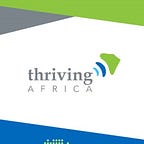Zero to Mega
Growing Your Business As An African Entrepreneur
If you’re a part of the Thriving Africa mailing list, you’ve probably already seen the recommended content sent out in the mail. If you’d like to join the mailing list, click here.
One constant worry for a startup founder is how to get more customers. More customers lead to more revenue, more profit, higher valuation and that is a very enviable goal. Growth may seem hard and elusive but it isn’t. In this article, we give 5 tips to take your startup from zero through to mega using growth hacking strategies.
- DISCOVER YOUR CUSTOMERS.
This is an underrated way of hacking growth as a startup. You must understand that your product is not for “anybody”. There is a difference between “anybody can use this product/service” and “Person X needs this service”. To discover your customers, look out for certain demographic information
- How old are they?
- What do they eat?
- Where do they work (if they work)?
- How much do they earn?
- What do they like to do (watch, read, listen to)?
- Who do they hang out with?
- What is their gender?
- What are their religious beliefs?
- How educated are they?
- What is their racial background?
- What is their ethnic background?
- What political beliefs do they hold dear?
- How do they dress?
Note that this is nowhere near an exhaustive list, and that not all these questions will be important in discovering your own customer. The point is that you make sure to gather as much relevant data on your customers as you can.
2. MEET THEM WHERE THEY ARE.
Many startup founders believe “if you build it, they will come”. That belief prevents you from seeing the truth that your target customers already have something or someone filling the space you hope to fill. That filling may not be the best possible option but they have lived with it so far and need a reason to want to change. To get them to see that difference that you have, you cannot wait for them to stumble on you. You must meet them where they are. Are they offline or online? Where do they gather? What events do they attend regularly? Where do they go to access the information they need?
3. DISCOVER THE LANGUAGE OF THEIR PROBLEM.
A few weeks ago, I was out on a really sunny afternoon. I was tired and thirsty but I had to rush to meet someone before the close of work that day. As I passed by a roadside shop, I heard an attendant say in the local language, “It’s so cold, it gets into your teeth.” Although I was in a hurry, I stopped. I just had to feel that kind of calming cold on a hot day. At that moment, that was the language of my problem at that time and I had no choice but to respond.
To hack growth, do your homework. Discover the problem your customers face. Is it an internal or external problem? What benefit does your product/service offer that can solve the problem your customers face? Craft your message to them around this benefit to the problem.
P. S. I still got to the appointment on time.
4. PIVOT WHEN NECESSARY.
Growing a startup is more like a ball game (soccer, basketball or rugby) than a game of archery or shooting. Both kinds of games have a fixed goal/target. However, the latter two involve firing in a straight line at the target. In these ball games, a player can take a run at the goal. If the path they chose gets blocked, they can always turn and take a better and more productive route. That is PIVOTING.
Don’t be so committed to one path. If you realize that your customers aren’t responding to your product the way you want them to, find out what they want and give it to them, even if it means changing your business plan.
5. DON’T BE STUCK IN TRADITIONAL METHODS.
One difference between a startup and a large company is that the large company is restricted to a limited range of moves — in this case, business models. A startup can try as many tactics as they like and dump those that don’t give the best results. Large companies cannot compete with this because of their size and the cost implications for them.
A very good example of this is Virgin Atlantic Airways. When they launched on their few routes, they offered free limousine services to and from the airport to their first-class passengers. This cost them little in relation to their competitors, who would have to offer the same bonus not just on those same routes, but on every route they flew. By doing this, they won over many customers from their competitors.
Try implementing these strategies in your business. Let us know how they work for you. Send us a mail at thriving.afrika@gmail.com.
To receive content like this and more, join the Thriving Africa Community on any of these platforms: mail, LinkedIn, Twitter and Instagram.
